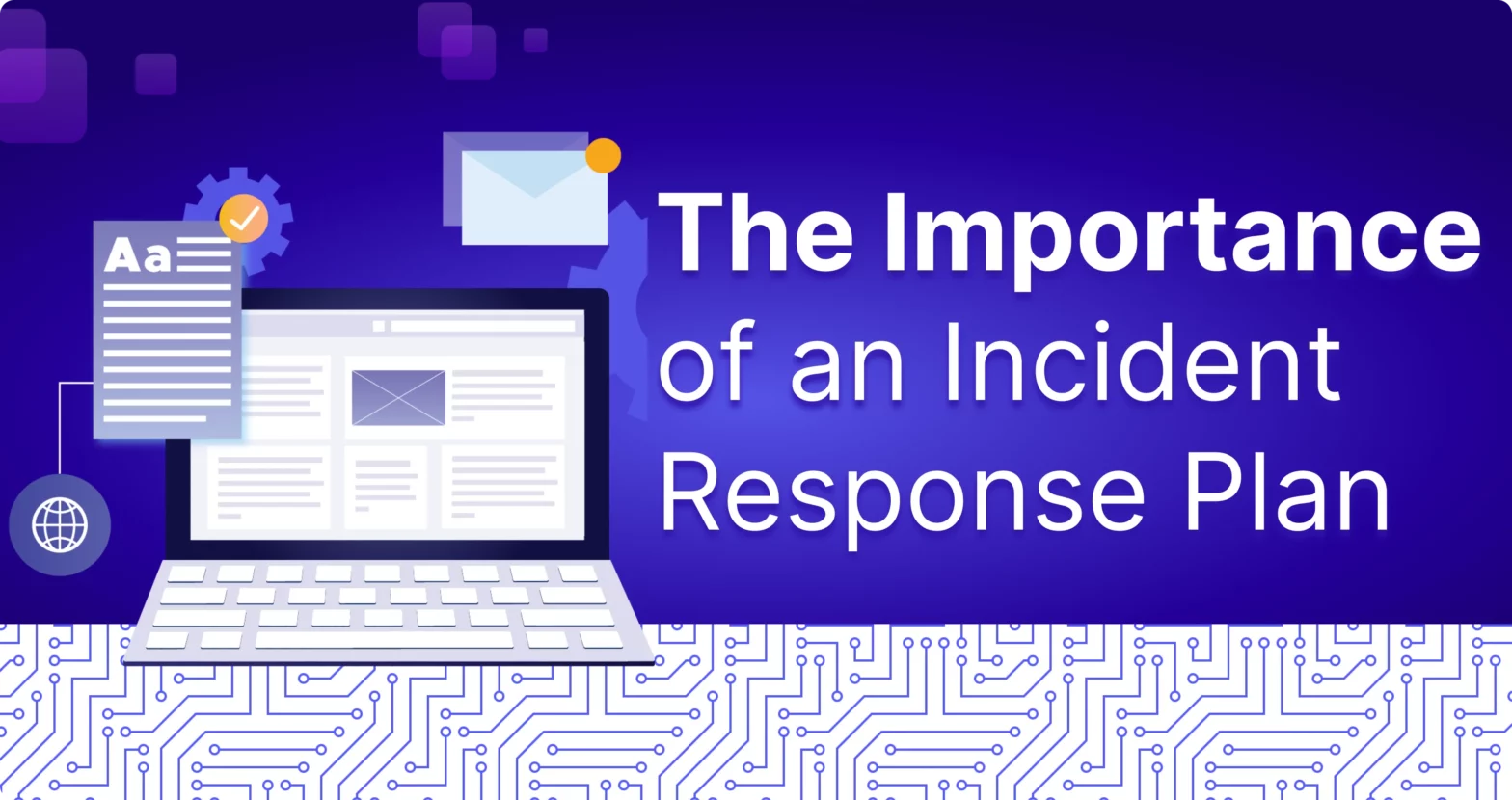The Importance of an Incident Response Plan

An Incident response plan is something that is much needed for any organization in the present industry context. This will prepare you for any sudden incidents that may occur that require the team’s attention and swiftly call to action all stakeholders that are needed for the resolution of such an incident.
Without an effective Incident Response Plan (IRP), an organization risks prolonged downtime, increased financial losses, and significant damage to its reputation. The lack of a clear plan can lead to delays in addressing incidents, higher costs for recovery, and potential legal and regulatory penalties. Overall, the absence of a robust IRP can result in severe operational and financial consequences.
What is an Incident Response Plan?
An organization can prepare for, detect, respond to, and recover from security incidents, such as data breaches, cyberattacks, or other security threats, by using an incident response plan (IRP), which is an organized, structured process. Reducing the impact of incidents, safeguarding assets, and facilitating a speedy return to regular operations are the three main objectives of an Incident Response Plan (IRP).
The steps of an incident response plan are critical for effectively managing and mitigating security incidents. Here's a breakdown of each step:
- Preparation:
- Develop and maintain an incident response policy.
- Assemble and train an incident response team.
- Establish and communicate clear roles and responsibilities.
- Ensure that all necessary tools and resources are in place, such as detection systems, communication channels, and backup processes.
- Identification:
- Monitor systems and networks for signs of potential incidents.
- Analyze alerts and logs to detect suspicious activities or anomalies.
- Verify and classify the incident, determining its scope and impact.
- Containment:
- Implement short-term containment measures to prevent the spread of the incident.
- Isolate affected systems or networks to minimize damage.
- Apply long-term containment strategies, such as patching vulnerabilities or strengthening defenses.
- Eradication:
- Identify the root cause of the incident and remove it from the environment.
- Delete malicious files, close exploited vulnerabilities, and ensure no residual threats remain.
- Conduct a thorough analysis to ensure that the threat has been completely eradicated.
- Recovery:
- Restore affected systems and services to normal operation.
- Verify that all systems are functioning correctly and securely.
- Monitor the environment for any signs of reinfection or recurring issues.
- Learning:
- Conduct a post-incident review to assess the effectiveness of the response.
- Document lessons learned and identify areas for improvement.
- Update the incident response plan, training, and tools based on the findings.
- Re-testing:
- Test the updated incident response plan and procedures to ensure they work effectively.
- Conduct regular drills and simulations to keep the team prepared.
- Continuously improve the incident response process based on test results and evolving threats.

Why do we need an Incident Response Plan
An incident response plan (IRP) is crucial for several reasons:
- Minimizes Damage: An effective IRP helps quickly contain and mitigate the impact of security incidents, reducing potential damage to systems, data, and operations.
- Ensures Rapid Response: With a predefined plan, organizations can respond swiftly to incidents, which is essential in minimizing downtime and maintaining business continuity.
- Reduces Costs: By managing incidents efficiently, organizations can limit the financial impact associated with data breaches, system outages, and other disruptions.
- Protects Reputation: A well-managed incident response can help preserve an organization’s reputation by demonstrating that it can handle security challenges effectively and transparently.
- Compliance Requirements: Many regulations and standards (e.g., GDPR, HIPAA) mandate having an incident response plan to ensure organizations are prepared for data breaches and other security events.
- Facilitates Learning: Incident responses provide valuable insights into vulnerabilities and weaknesses, allowing organizations to improve their security posture and avoid similar issues in the future.
- Legal and Regulatory Obligations: A robust incident response plan can help meet legal and regulatory requirements, including notification obligations and documentation for investigations and audits.
- Enhances Coordination: It establishes clear roles and responsibilities, communication channels, and procedures, which enhances coordination and efficiency during an incident.
Some Case Studies are given below where the implementation of an Incident Response Plan helped companies resolve the issues and minimize the impact to their business processes.
Target Data Breach (2013)
- Incident: Data breach affecting over 110 million customers.
- Response: Isolated malware, notified customers, cooperated with law enforcement, and enhanced security measures.
Sony Pictures Entertainment Hack (2014)
- Incident: Cyber Attack leading to data theft and leaks.
- Response: Restored systems from backups, communicated with stakeholders, enhanced security controls, and pursued legal action.
WannaCry Ransomware Attack (2017)
- Incident: Global ransomware outbreak affecting numerous organizations.
- Response: Isolated infected systems, applied patches, restored data from backups, and communicated effectively.
Colonial Pipeline Ransomware Attack (2021)
- Incident: Attack disrupting fuel supplies in the U.S.
- Response: Contained malware, restored operations, coordinated with agencies, and improved security measures.
In today's cyber environment, having a solid incident response plan (IRP) is crucial. An effective IRP helps organizations respond quickly to incidents, minimize damage, and ensure business continuity. It supports compliance, protects reputation, and improves resilience against future threats. Regular updates and testing are key to keeping the plan effective. Investing in a robust IRP is essential for safeguarding digital assets and maintaining trust with customers.
Check the below resources on how to create your Incident Response Plan;
https://www.cisa.gov/sites/default/files/publications/Incident-Response-Plan-Basics_508c.pdf